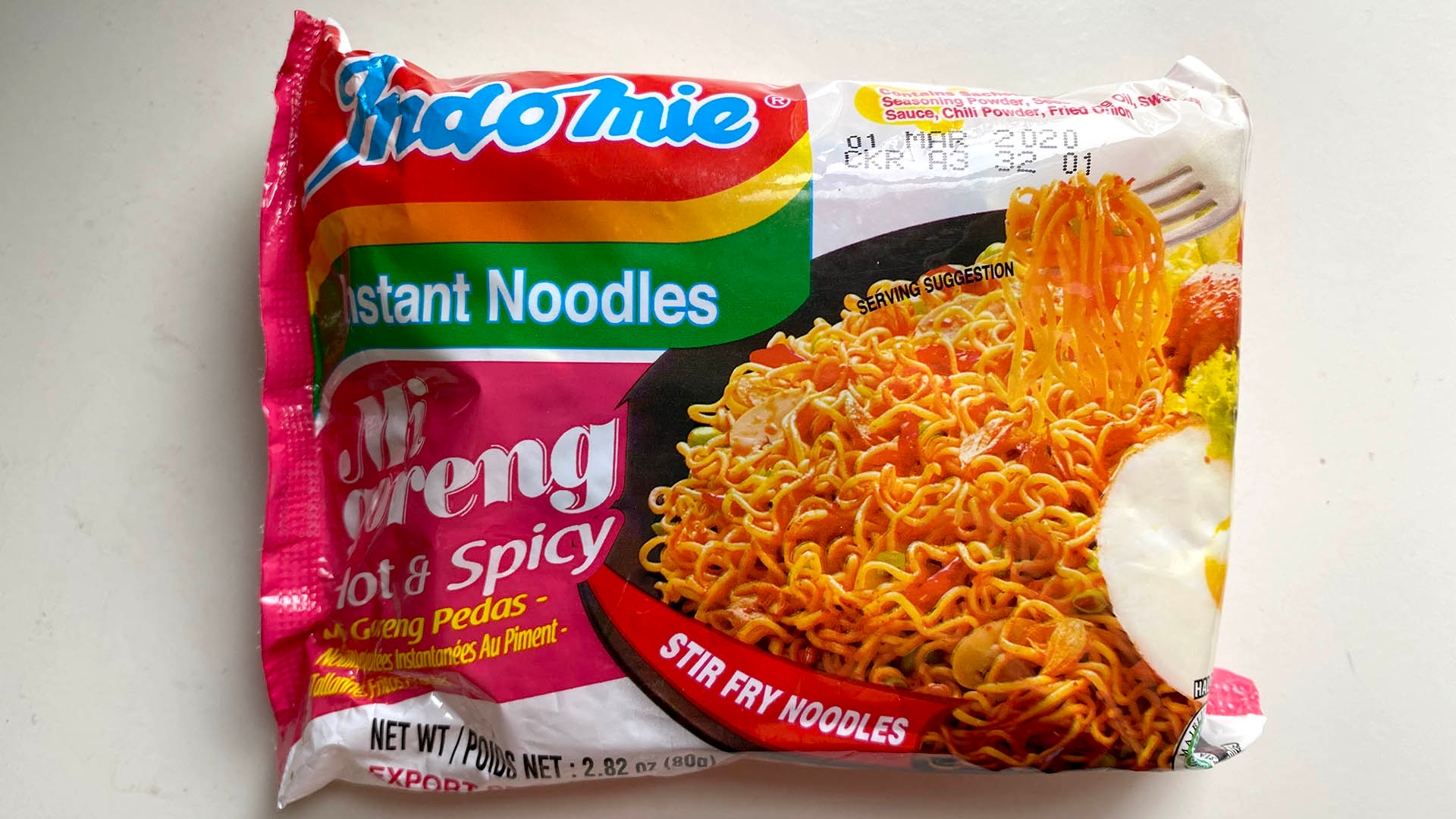Mi Goreng Belongs At The Top Of Any Noodle Lover's List
We may receive a commission on purchases made from links.
Way back in March, my mother was putting together a pandemic care package for me and asked what essentials I needed. When I thought about what would help me physically and emotionally weather the chaos, I knew I only wanted one thing: Indomie Mi Goreng. In countless households across Indonesia and the world, including my own, these instant noodles are nearly synonymous with comfort. It's a humble, reliable dish with a standout flavor that should put it at the top of any instant noodle enthusiast's list.
For many years, the flavors and textures of South Korea and Japan have dominated the instant noodle market in the U.S.. In any number of online rankings you'll find a few, familiar brands: Shin Ramyun, Neoguri, Nongshim, Mama, Maruchan, Nissin Cup Noodle. The best of these brands share a few notable qualities: slurpable noodles; hot, piquant, seafood-based broths; and "vegetable" packets of dried kombu, carrot, and shiitake that resemble colored styrofoam.
Indomie Mi Goreng is different. Its addictive flavor profile is derived from mie goreng (literal translation: fried noodle), one of Indonesia's most popular dishes, variations of which are made all across South and Southeast Asia. The homemade—or, more likely, street cart—version consists of thin yellow wheat noodles stir-fried in hot oil with shallots, garlic, onion, kecap manis (a sweet, dark soy sauce), and spicy sambal.
Just like its no-frills namesake, Mi Goreng has a simple formula: springy, bouncy noodles coated in a sticky sweet-spicy-savory sauce. The noodles' Big Flavor comes from its five seasoning packets, which include a sesame soy sauce, chili-garlic seasoning oil, chili powder, onion-garlic-MSG powder, and fried onions to top it all off.
While instant versions of "real" dishes typically fall flat, Mi Goreng is a wonder in its own right. Despite its relative obscurity in the U.S., it's hard to overstate its popularity in other parts of the world. Indofood, Indomie's parent company, introduced Mi Goreng in 1983 and now controls a 72% share of Indonesia's instant-noodle market. That's saying a lot for a population that accounts for 15% of instant-noodle consumption on Earth. Mi Goreng is also a heavy-hitter in the Middle East, Europe, Asia, and Australia, where a version mixed with peanut butter has even been known to quell prison tensions. I would be remiss if I failed to mention its contribution to pop culture: in 2011 it inspired an entire song and video from the Nigerian rapper J2O.

At its core, however, Mi Goreng is more than a cultural phenomenon. Unlike other foods of my childhood, once considered too foreign to consume but now marked-up on store shelves and recommended to me by white dudes in beanies, Mi Goreng's popularity has sidestepped the spectacle of, say, pho or rendang. Although when I was growing up we often ate it when my mom was too tired to cook, I never associate Mi Goreng with anything other than joy. "Mi Goreng defies class," says my friend Denny, who also grew up eating it. "Enjoying Mi Goreng doesn't require you to come from any sort of background. It's simply delicious."
So let's say you're fortunate enough to acquire some of your own, and you're ready to find out why it's the king of instant noodles. The key to making a perfect bowl is to pay close attention to the noodles while they're cooking. It's absolutely crucial that they are not overcooked but maintain a good, al-dente chew. That means only one or two minutes in water that's at a roiling boil. (Have I tried to cook Mi Goreng with water from an electric kettle and then drained the soggy noodles in a dorm-room sink? I plead the fifth.)

While you're boiling your noodles, empty the flavor packets into a bowl. If you're spice-averse, use only half the chili powder. It's not a move I would necessarily endorse, but the beauty of Mi Goreng is its ability to work for everyone. Mix the seasonings together. Once your noodles are ready, drain them and add them to your bowl. Then mix again until all the noodles are thoroughly coated in that tasty, tasty sauce.
From here, the possibilities are endless. I would consider one packet on its own a good midday snack, while two packets with some choice extra toppings is a full meal. (Once in high school, two friends and I consumed fourteen packets between us, so if you're up for more, I won't judge.) Mi Goreng can handle all kinds of vegetable and protein additions: everything from wilted crisper greens to freshly bought prawns. My mom recommends adding julienned vegetables and shrimp fried in butter while my Singaporean auntie enjoys it with tomatoes and fish cakes. In my opinion, a crispy fried egg with a still-oozy yolk makes these noodles a textural sensation and a perfect food.
And why stop at the original flavor when Indomie boasts such a wide range: everything from barbecue chicken, to satay, cabe ijo (green chili), soto ayam (chicken soup), iga penyet (sambal ribs), and rendang. While these options can never fully replicate the complex and unique flavors of Indonesian cooking, I consider Mi Goreng an accessible gateway for Americans to try a largely underrepresented cuisine. This single dish represents the base notes of so many Indonesian dishes: kecap manis; a deep, almost caramelly sweetness; chili; and layered alliums.
Six months later, I only have one package left of the original 20 my mom sent me, back in March. I've been saving it for a special occasion: maybe a day I feel especially shitty, maybe a day I need to celebrate. Even though lately the days have felt more or less the same, I know Mi Goreng will serve me well.
You can find Mi Goreng at your local Asian grocery store or online in packs of 30 (doomsday stockpiling can never start too early).
